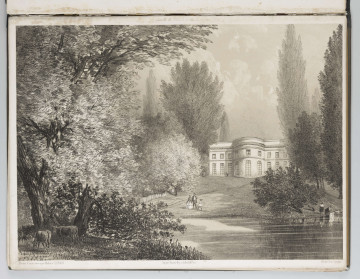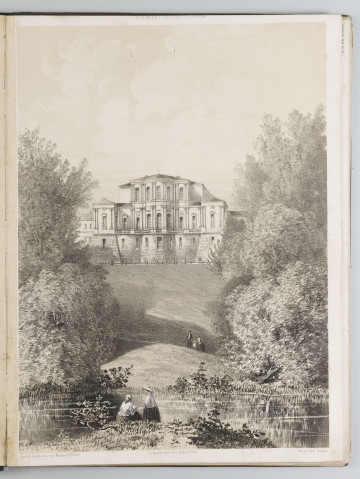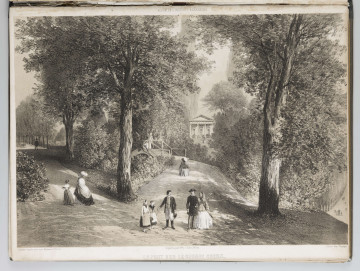
Palais de Marynki vu de l'ile
1860
National Museum in Lublin
Part of the collection: Lubliniana. Painting views of Lublin and the Lublin Region
The Puławy residence of Adam and Izabela Czartoryski was in its prime in the years 1785-1831. At that time the palace was the centre of political, cultural and literary life of the country and Puławy was known as the Polish Athens. After the fall of the November Uprising, which the Czartoryskis supported, their property, which was in the Russian partition, was confiscated by the tsarist government. The palace and gardens of Puławy became part of the state treasury, and Prince Adam Jerzy was sentenced to death in absentia by the tsar. The Czartoryskis left Puławy, taking away a large part of their collection. Adam Jerzy went into exile to Paris.
In 1842 the Russian authorities established the Institute for the Education of Ladies (the so-called Maryjski Institute) in the former seat of the Czartoryski family, transferred from Warsaw. The Institute operated in Puławy until 1862, when it was moved back to Warsaw. The palace, destroyed by Russian troops, was rebuilt for the needs of the school. The siege and bombing was carried out in 1831 by the grandson of Duchess Izabela (son of Maria née Czartoryska), Prince Adam Karol Wilhelm Wirtemberski, an officer in the service of the Russian army and a traitor to the family. The reconstruction of the palace (another one) in neoclassical style was carried out by the Warsaw architect Józef Górecki in 1840-1843. At that time, the representative stone staircase was removed, the terrace and the second floor were extended, and the side wings were connected with former outbuildings. This image of the building is depicted in the view by Barbara Czernof/Armanda Cassagne. The building existed in this form until the fire of 1858.
The Maryjski Institute was an elite school for girls. It accepted two hundred young students a year, mainly daughters of officials and members of the tsarist army, providing them with excellent teaching staff headed by Barbara Czernof nee Groten (painter, drawing teacher) and Edward Stolpe (pianist, composer, music teacher). The school's main goal was to teach proper etiquette and style. The Institute employed, among others, the widowed Marcjanna Trembińska, grandmother of Aleksander Głowacki (later writer Bolesław Prus), who helped in economic matters. She lived in a room in an outbuilding, from 1850 with three-year-old Aleksander, who became an orphan. At the age of seven the boy left his grandmother and Puławy.
Renata Bartnik
Author / creator
Dimensions
cały obiekt: height: 43,8 cm, width: 31,8 cm
Object type
graphics
Technique
lithography
Material
paper
Creation time / dating
Creation / finding place
Owner
The National Museum in Lublin
Identification number
Location / status

1860
National Museum in Lublin

1860
National Museum in Lublin

1860
National Museum in Lublin
DISCOVER this TOPIC
Castle Museum in Łańcut
DISCOVER this PATH
Educational path